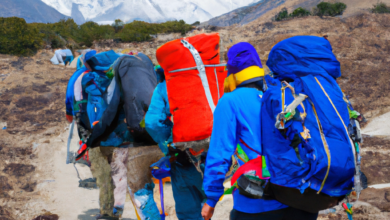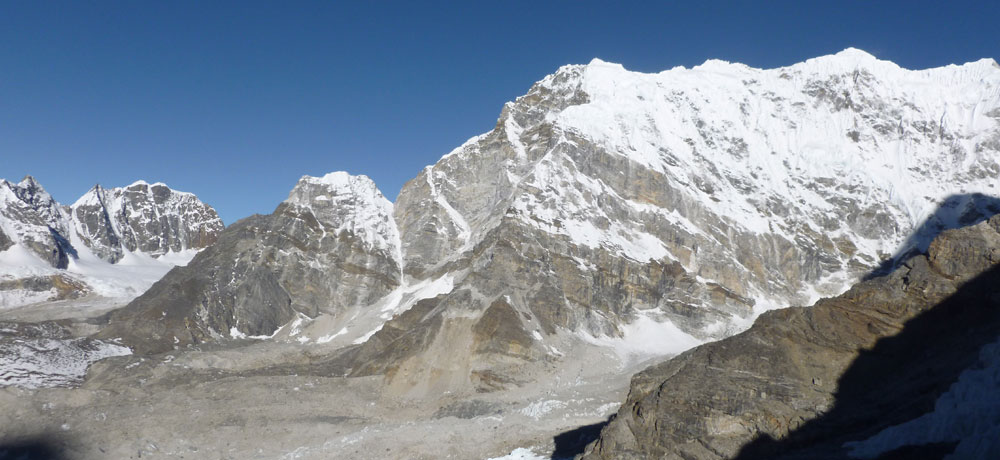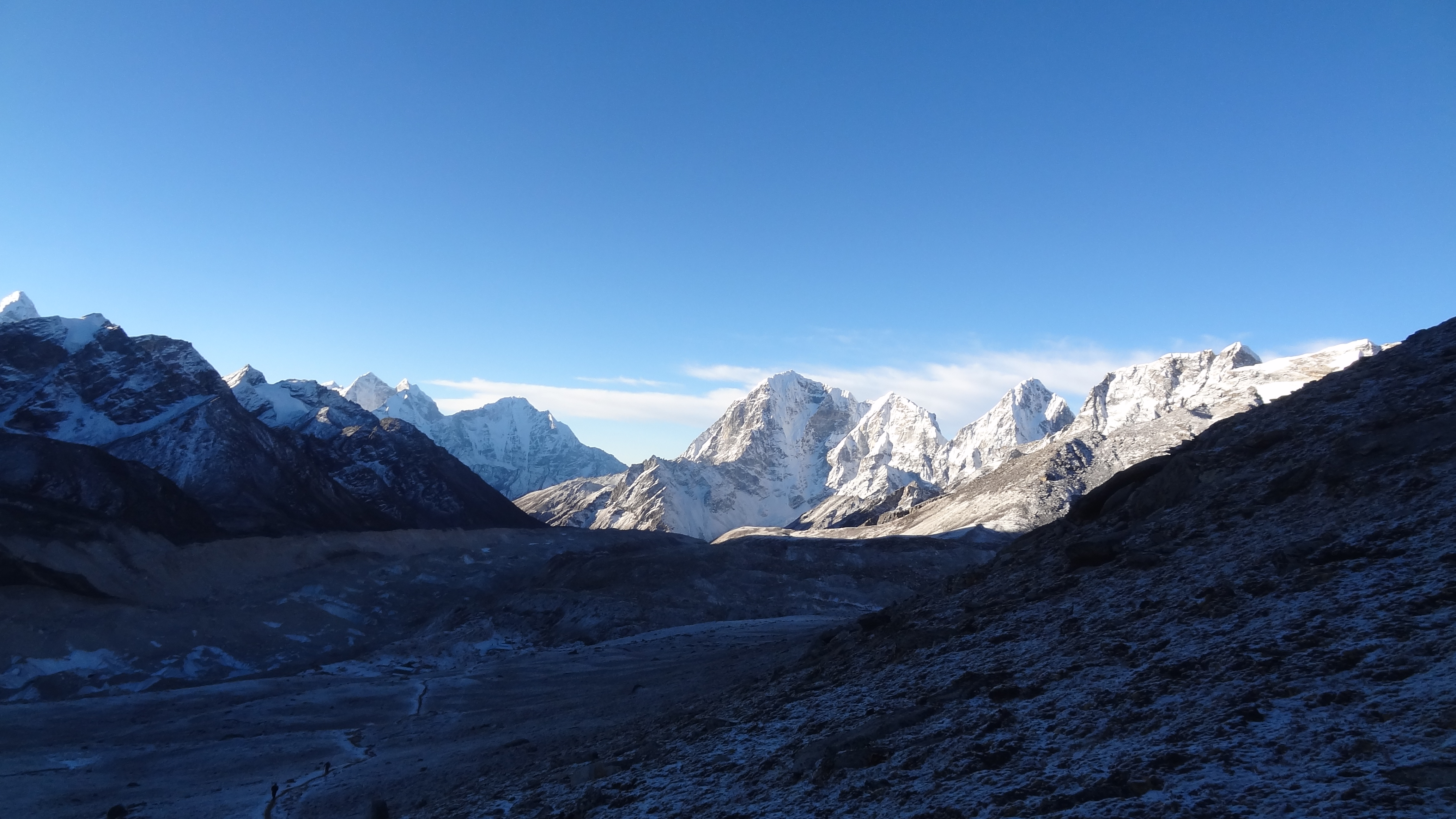Remote TreksTrekking in nepal
The Ultimate Guide to Manaslu Circuit Trek: Nepal’s Hidden Gem

The Manaslu Circuit Trek remains Nepal’s best-kept secret. Unlike the crowded trails of Everest Base Camp and Annapurna Circuit that attract thousands each year, this trek offers a genuine Himalayan adventure.
You’ll circle the world’s eighth-highest peak through untouched landscapes and traditional Buddhist villages. The trek showcases Nepal’s incredible diversity. The trail winds from subtropical forests in lower regions to harsh arctic conditions near Larkya La Pass, making it one of the country’s most varied trekking routes.
This piece will teach you everything about mastering the Manaslu Circuit Trek. You’ll discover the ideal times to visit, get details about permits, and learn what gear you need. The guide also covers physical preparation tips and cultural insights to help you plan an unforgettable Himalayan adventure.
Understanding the Manaslu Circuit Trek
The Manaslu Circuit Trek sits peacefully in Nepal’s Himalayan heart. This remarkable trip has won over countless adventurers looking for genuine Himalayan experiences since it opened to foreigners in 1992.
History and significance of the trek
The Manaslu region’s history runs deep as an ancient salt-trading route between Tibet and Nepal. “Manaslu” comes from Sanskrit, meaning “intellect” or “soul” – a testament to this majestic peak’s spiritual value. The trek circles Mount Manaslu (8,163 meters), the world’s eighth-highest mountain, through landscapes that time seems to have forgotten.
Key features and highlights
The Manaslu Circuit shows off an amazing mix of experiences:
- Natural Wonders: You’ll pass through 19 different forest types, crystal-clear glacial lakes, and thundering waterfalls
- Cultural Heritage: Ancient monasteries and traditional Tibetan-style villages dot your path
- Wildlife Encounters: Lucky trekkers might spot snow leopards, Himalayan tahr, and musk deer
- Dramatic Landscapes: The terrain changes from subtropical forests to arctic zones
- Mountain Views: Stunning panoramas of Manaslu, Himalchuli, and Ganesh Himal await
The trek’s highlight comes when you cross the challenging Larkya La Pass at 5,160 meters. The pass rewards you with spectacular views of nearby peaks like Kang Guru and Annapurna II.
Why choose Manaslu over other treks
The Manaslu Circuit stands out from popular routes like Everest Base Camp or Annapurna Circuit because of its untouched beauty. Local villages still thrive on farming and cattle rearing rather than tourism. Limited access requirements help keep the region authentic by controlling visitor numbers and protecting its cultural heritage.
This trek strikes the perfect balance between challenge and reward. The terrain demands respect with its ups and downs, but you’ll find peace and quiet that’s rare on Nepal’s busier trails. The Manaslu Conservation Area spreads across 1,663 square kilometers and is a chance to experience one of the Himalayas’ richest biodiversity spots. Traditional teahouses along the route make your stay comfortable and authentic.
Planning Your Manaslu Adventure
You need careful planning and preparation to complete the Manaslu Circuit Trek successfully. Here’s what you should know before you start this amazing trip.
Best seasons and weather conditions
The Manaslu Circuit Trek gives you different experiences in each season. Your timing will affect your trek experience greatly:
Spring (March-May)
- Stable weather with temperatures between 10°C to 20°C during day
- Clear mountain views and blooming rhododendrons
- Perfect conditions to cross Larkya La Pass
Autumn (September-November)
- Best time for trekking
- Daytime temperatures range from 15°C to 25°C
- Crystal-clear mountain views with stable weather
Winter and Summer: These seasons bring extra challenges like extreme cold or monsoon rains. Most trekkers avoid these times.
Required permits and documentation
The Manaslu region needs special permits because it’s a restricted area:
- Restricted Area Permit (RAP)
- September-November: USD 100/week (USD 15/day after)
- December-August: USD 75/week (USD 10/day after)
- Conservation Area Permits
- Manaslu Conservation Area Permit (MCAP): USD 30
- Annapurna Conservation Area Permit (ACAP): USD 30
Essential Documents Required:
- Valid passport with Nepal visa
- Four passport-sized photos
- Travel insurance papers
- Detailed trekking itinerary
Cost breakdown and budgeting tips
Here’s a clear picture of costs to help you plan your trek:
Core Expenses:
- Guide services: USD 25-35 per day
- Porter fees: USD 20-30 per day
- Accommodation: USD 5-20 per night (costs more at higher altitudes)
- Meals: USD 30-40 per day
- Transportation: USD 30-200 (depends on vehicle choice)
Money-Saving Tips:
- Book in early March or late November
- Share your porter with other trekkers
- Stay in simple teahouses instead of premium ones
- Pack some snacks from Kathmandu
- Join group tours to split costs
Note that you can’t trek alone in the Manaslu region. You must book through a licensed agency. This rule adds to your cost but keeps you safe and helps the local economy.
Physical Preparation and Training
Getting your body ready for the Manaslu Circuit Trek is vital for your enjoyment and safety. You don’t need to be an athlete, but good physical conditioning will help you face the challenges of high-altitude trekking confidently.
Required fitness level
The Manaslu Circuit Trek needs moderate physical fitness and involves daily walks of 5-8 hours. Your cardiovascular endurance should be enough to handle the varying terrain and altitude. The good news? You don’t have to be a marathon runner – people with simple fitness levels can complete the trek successfully with proper preparation.
Key Physical Requirements:
- Knowing how to walk 5-8 hours daily on uneven terrain
- Endurance to tackle continuous uphill and downhill sections
- Core strength to balance on rocky paths
- Strong legs to handle steep ascents and descents
Training program recommendations
Start your training program 8-12 weeks before your trek. Your complete preparation should include:
- Cardiovascular Training (3-4 times per week)
- 30-45 minutes of running, cycling, or swimming
- Build up duration and intensity step by step
- Train uphill whenever possible
- Strength Training (2-3 times per week)
- Lower body exercises: squats, lunges, step-ups
- Core strengthening: planks, crunches
- Back exercises to carry your pack better
Practice Hikes: Begin with 10-mile hikes that include 1,000 ft elevation gain and gradually increase both distance and elevation. Use your trekking boots and carry a weighted backpack to match actual conditions.
Altitude acclimatization strategies
The Manaslu Circuit Trek takes you to high altitudes, which makes proper acclimatization essential. Your body needs time to adapt to lower oxygen levels as you go higher.
Key Acclimatization Principles:
- Go up no more than 300-500 meters daily
- Use the “climb high, sleep low” rule
- Drink 4-5 liters of water daily
- Pay attention to your body’s signals and rest when needed
Note that fitness level doesn’t guarantee protection from altitude sickness. Even experienced trekkers must follow proper acclimatization guidelines. The trek includes two dedicated acclimatization days, but you should also follow these strategies:
- Take slow, steady steps (“pole pole” in Nepali)
- Skip alcohol and tobacco
- Keep your breathing regular
- Stop often during climbs
- Use trekking poles to stay stable
Essential Gear and Equipment
The right gear can make your Manaslu Circuit Trek an amazing experience or a challenging ordeal. Let me walk you through what you need to pack and help you decide whether to buy or rent your trekking gear.
Complete packing checklist
Your Manaslu Circuit Trek gear should be light enough to carry yet tough enough to handle weather changes. Here’s what you need to bring:
Core Clothing Items:
- Base layers (moisture-wicking materials)
- Insulating mid-layers (fleece or wool)
- Waterproof outer shell
- Trekking pants and shorts
- Thermal underwear
- Hiking socks (3-4 pairs)
Critical Equipment:
- Four-season sleeping bag (rated to -20°C)
- Comfortable, broken-in trekking boots
- Backpack (daypack 20-30L)
- Trekking poles
- Headlamp with spare batteries
Seasonal gear considerations
Your gear needs to line up with your trekking season. Here’s a breakdown of what each season demands:
| SeasonEssential AdditionsOptional Items | ||
| Spring | Rain jacket, light gloves | Sun hat, lightweight shirts |
| Autumn | Warm hat, heavy gloves | Gaiters, thermal flask |
| Winter | Down jacket, thermal layers | Hand warmers, snow gear |
| Summer | Quick-dry clothing, rain gear | Extra socks, light jacket |
Pro Tip: Smart layering beats single heavy pieces. You can adjust your layers as temperatures change throughout the day.
Renting vs buying equipment
You can either buy your gear before the trek or rent it in Kathmandu. Here’s what you should think about:
Items Worth Buying:
- Hiking boots (personal fit is vital)
- Base layers and socks
- Personal items like underwear and toiletries
Consider Renting:
- Sleeping bags (USD 1-3 per day)
- Down jackets (USD 1-2 per day)
- Trekking poles (USD 1 per day)
The Thamel district in Kathmandu has many reliable shops that offer quality rental gear. Important: Check all rental items carefully before taking them, especially sleeping bags for proper insulation and down jackets for fill quality.
Kathmandu has plenty of outdoor shops selling trekking gear, but watch out for fake products. Buy crucial items like water purification tablets and cold-weather gear from authorized retailers only. Authentic equipment costs more but keeps you safe and comfortable during your trek.
Note that some trekking agencies include basic gear like sleeping bags and down jackets in their package price. Check what equipment comes with your booking before you buy or rent additional gear.
Navigating the Trek Route
The Manaslu Circuit Trek follows an ancient trading route through Nepal’s most spectacular landscapes. This guide breaks down the path that will be your home for two weeks.
Detailed route overview
A 6-hour drive from Kathmandu takes you to Soti Khola, making this one of the most available major treks in Nepal. Your 126-kilometer adventure starts here and follows the deep gorge of the Buri Gandaki River.
The trek moves through this pattern:
| DayRouteDistanceWalking Time | |||
| 1-3 | Soti Khola to Jagat | 22 km | 6-7 hours/day |
| 4-6 | Jagat to Namrung | 25 km | 6-7 hours/day |
| 7-9 | Namrung to Samagaon | 20 km | 6-7 hours/day |
| 10-12 | Samagaon to Bimthang | 35 km | 7-9 hours/day |
| 13-14 | Bimthang to Dharapani | 24 km | 5-6 hours/day |
Key checkpoints and landmarks
The route takes you through several most important checkpoints that serve as both rest stops and cultural landmarks:
- Major Villages:
- Machha Khola (900m) – Your first night’s stop
- Jagat (1,340m) – Permit checkpoint
- Namrung (2,630m) – Gateway to upper Manaslu
- Samagaon (3,530m) – Largest village en route
- Samdo (3,875m) – Last permanent settlement
Pro Tip: Teahouses in these villages provide simple but comfortable accommodations with common areas to eat and socialize.
Alternative routes and side trips
Several compelling detours can enhance your trek:
Pungyen Gompa: A day hike from Samagaon guides you to this ancient monastery with spectacular views of glaciers and mountain peaks. This works well as an acclimatization activity.
Birendra Lake: A 45-minute detour from Samagaon reveals this stunning glacial lake, which perfectly reflects Mount Manaslu.
Manaslu Base Camp: Adventurous trekkers can take a challenging day trip from Samagaon to reach the base camp at 4,900m. The camp offers extraordinary mountain and glacier views.
Important: Ask your guide’s approval and ensure proper acclimatization before attempting these side trips.
Larkya La Pass (5,160m) marks the trek’s pinnacle. Here, outstanding views of Himlung Himal, Cheo Himal, and the massive Annapurna II await. The path down leads through misty low pastures with Mount Manaslu as your backdrop.
The trek ends in Dharapani. You can continue to the Annapurna Circuit or return to Kathmandu. The return trip shows new angles of the landscapes, with the Marsyangdi and Trishuli rivers as your companions.
Cultural Experiences and Local Life
The Manaslu Circuit Trek offers more than stunning views. It also offers a mixture of cultural experiences that turn a simple hiking adventure into something deeper. Each village along this ancient trading route tells its own story.
Traditional villages and monasteries
The villages on your trek are museums of Nepal’s varied cultural heritage. Namrung gives you your first look at traditional Tibetan architecture. Stone houses with detailed woodwork show the skill of craftsmen from centuries past. The village brings together Gurung and Tibetan traditions that blend naturally.
Higher up, Lho village greets you with the beautiful Ribung Gompa monastery. You can watch monks perform their daily rituals and see Mount Manaslu through windows decorated with prayer flags. The monastery walls display beautiful Buddhist art and ancient texts that tell stories of spiritual paths.
Samagaon, known as the heart of the Manaslu region, is home to the sacred Sama Gompa. Here you’ll see:
- Monks chanting ancient prayers
- Traditional Buddhist artifacts
- Centuries-old meditation halls
- Spectacular views of surrounding peaks
Local customs and etiquette
Your trek becomes richer when you understand and respect local customs. Here’s what you need to know about cultural practices in the Manaslu region:
| CustomDescriptionYour Response | ||
| Greetings | “Namaste” with palms together | Return the gesture with respect |
| Sacred Sites | Clockwise circumambulation | Always keep monuments to your right |
| Meals | Eating with right hand | Avoid using left hand for food |
| Photography | Permission before clicking | Ask politely, especially at monasteries |
The region celebrates many festivals throughout the year. Losar (Tibetan New Year) stands out as the most important. You might see traditional dances, feast preparations, and religious ceremonies that haven’t changed for generations.
Interaction with Tibetan communities
The Manaslu Circuit Trek lets you participate with Tibetan communities, especially in the higher regions near Samdo. These settlements keep their Tibetan heritage alive through:
Traditional practices like weaving, where women create beautiful Dhaka cloth for ceremonial dress. Local people often work on traditional looms, creating patterns their ancestors passed down.
The local food shows this mix of cultures. You can taste authentic Tibetan dishes such as:
- Thukpa (hearty noodle soup)
- Tsampa (roasted barley flour)
- Traditional yak cheese
- Butter tea (po cha)
Samdo, the final permanent settlement before Larkya La Pass, shows the strongest Tibetan influence. The Bhatia community keeps age-old traditions alive. Their daily life teaches us about high-altitude living. You might see traditional butter churning, prayer wheel turning, and hear Buddhist mantras.
These rules matter when you visit monasteries (gompas):
- Remove shoes before entering prayer halls
- Avoid touching religious artifacts
- Maintain silence during prayer times
- Make donations (Dakshina) if you wish to take photos inside
The culture changes as you move through the circuit. Lower regions show Hindu influences while Buddhist traditions dominate the highlands. You’ll notice this in building styles and food habits. Lower villages have traditional Gurung homes with slate roofs and carved windows. Higher areas feature typical Tibetan buildings with flat roofs and prayer flags.
This trek goes beyond mountain views and high passes. You’ll learn about one of the world’s unique cultural settings. Every village, monastery, and conversation helps you understand more than just trekking can teach.
The communities along the Manaslu Circuit Trek have kept their traditions for centuries. Your respect for these cultures helps preserve their authenticity and creates connections that last long after your trek ends.
Conclusion
The Manaslu Circuit Trek represents Nepal’s perfect fusion of adventure, culture, and natural beauty. This path through pristine landscapes, ancient monasteries, and traditional villages creates memories that popular routes like Everest Base Camp are nowhere near matching. The trek’s restricted status keeps its authenticity intact and gives you an unmatched chance to see genuine Himalayan life.
Your success on this remarkable circuit heavily depends on smart preparation. The right timing, proper physical training, and suitable gear choices will turn your trek from a simple hiking adventure into a life-changing experience. High-altitude passes and unpredictable weather conditions make reaching the finish line even more meaningful.
Every step on the Manaslu Circuit reveals its own story through ancient monasteries’ prayer flags, villagers’ warm smiles, and majestic peaks that watch over your progress. This hidden gem of Nepal welcomes those who dare to step beyond the ordinary and create memories that will outlast the footprints you leave behind.







